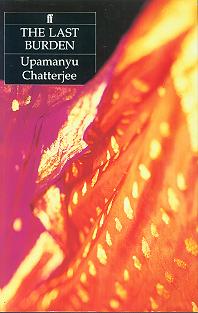Thespian Thoughts
Last Thursday I saw this play titled A Heap of Broken Images at the Ranga Shankara in J P Nagar, Bangalore. This play written by Girish Karnad & directed by the playwright himself along with K M Chaitanya is the English version of a Kannada play called Odakalu Bimba by Karnad. This is supposed to be the first play Karnad has directed in 30 years. Essentially a 60-minute monologue, this play had Arundhati Raja essaying the lead role of Manjula Nayak.
Manjula Nayak is a Kannada writer who publishes a book in English, titled The river has no memories, which goes on to become a bestseller. She is married to Pramod Rao, a software professional (at the theatre, the stud & the stallion seemed to find this amusing & tried to prod the namesake who bore it all with uncharacteristic stoicism). Her sister Malini Nayak is a cripple - the lower part of her body, below her waist is paralysed. The play is set in a TV studio where Manjula is about to speak about her book & its Kannada screen adaptation. This is supposed to be followed by the telecast of the movie itself on Shree TV. During the course of her speech, she defends her choice of English as the medium of expression. She attributes the furious debate over her 'loyalty' to her mother tongue to jealous peers who are envious of the success of her book & the concomitant fame & monetary rewards. She also reveals that the inspiration for the book was her late sister.
After her speech Manjula prepares to leave & this is when the play enters the actual 'dramatic' phase with the appearance of her conscience as an image of herself on a TV screen by her side (as if her thought processes & the appurtenant brain waves had found a resonant channel of expression in Shree TV's frequency). From this point onwards, the fabric of this seemingly innocuous plot reveals a multi-coloured skein which is unravelled in layers or rather levels - as if one were being led down a staircase, down to the bottom of the affair, to the denouement, stopping at each landing for probing taunts by Manjula's conscientious 'onscreen' avatar and introspection & palpable denials on Manjula's part which end up transforming into resigned confessions.
The sets were minimal and Manjula actually notices this at the beginning & assumes that it is so because of the flavour of our times being technology-enabled miniaturization. The use of subtle lighting to focus on Manjula as she moves around trying to shield herself from the barbed comments shot by her conscience deserves a mention here - throughout the play it appears as if an understated spotlight is always directed at Manjula. The absent characters are brought alive during the course of Manjula's soliloquy. The tough task of synchronising with the video played on the TV was effortlessly handled by the veteran Arundhati Raja.
Ranga Shankara was built as a tribute to the late Shankar Nag (who died in 1990 at the age of 35 in an accident), as a realisation of his dream of having a theatre space with affordable rates for both staging & viewing purposes. The driving force behind the construction is Shankar Nag's wife Arundhati Nag. Apart from the auditorium, there is also a bookshop, an art gallery & a cafeteria on the premises of Ranga Shankara. Shankar Nag acted in several popular Kannada movies essaying a variety of roles, notable among them being those of SP Sangliana & an autorickshaw driver, Auto Raja. He is best remembered for his remarkable TV series Malgudi Days based on the book by the same name by R K Narayan. The TV series, supposed to be the first Hindi serial made in South India, was an incredibly faithful adaptation of the incidents in the book. The series had a host of Kannada film, television & theatre personalities playing various roles - G V Iyer, Ananth Nag, Master Manjunath (as Swami), Shankar Nag himself. Even the locations (Agumbe was one, I presume) reflected the quintessential rusticity of Malgudi.
In the end, a brilliant play & a superb auditorium made for an evening (and money) well-spent.





